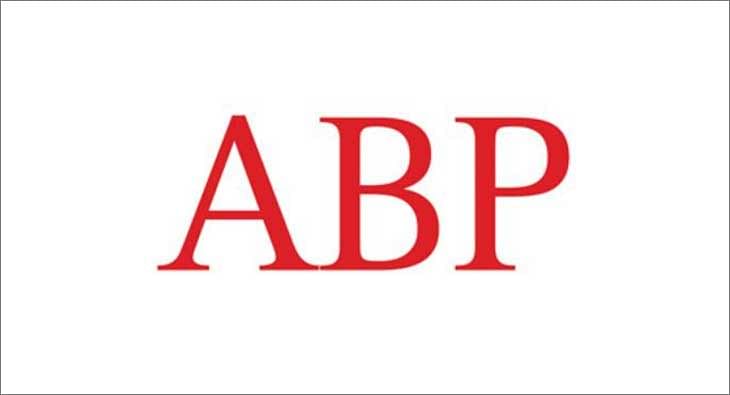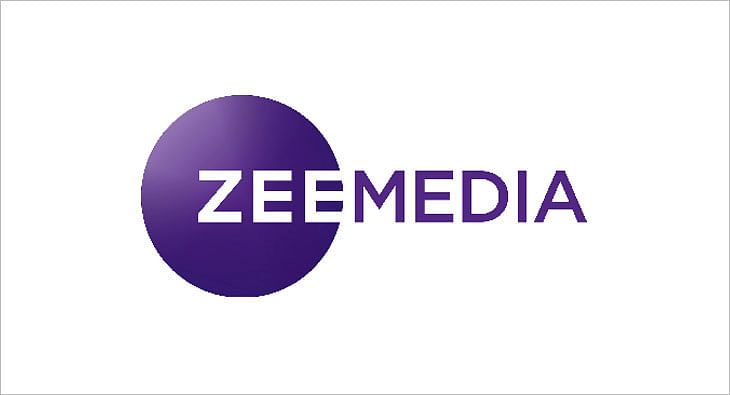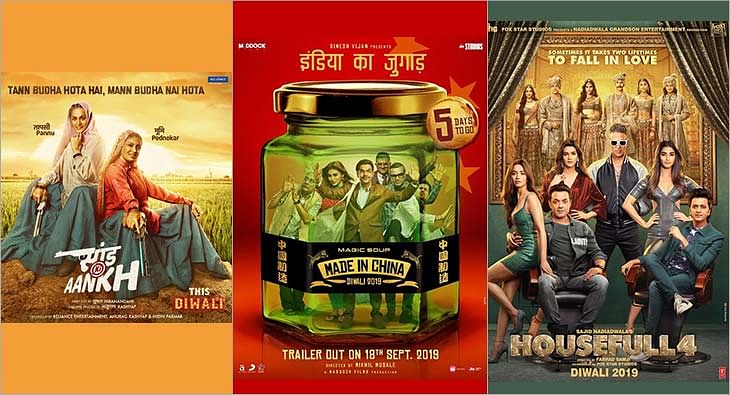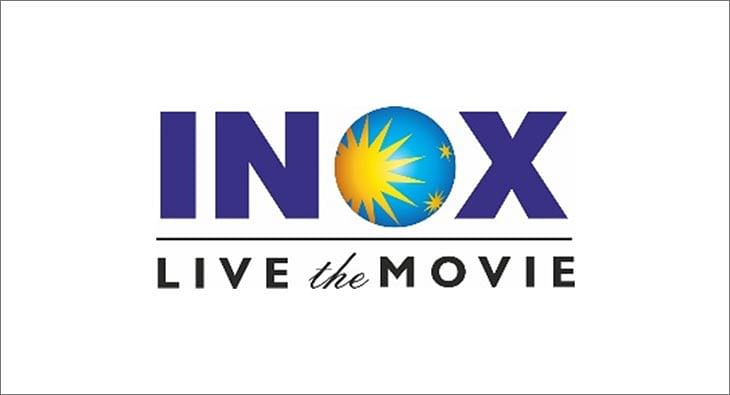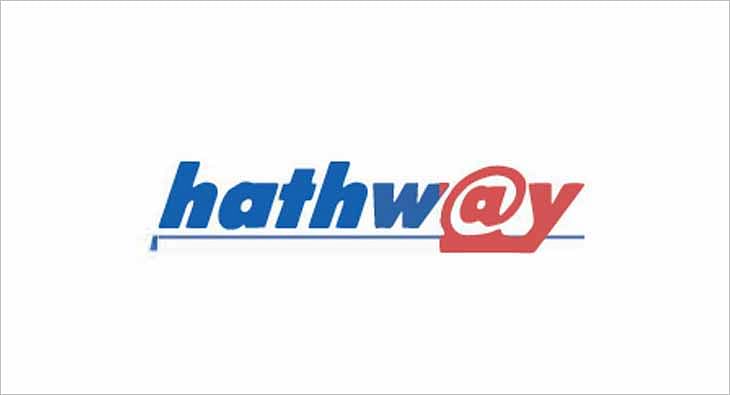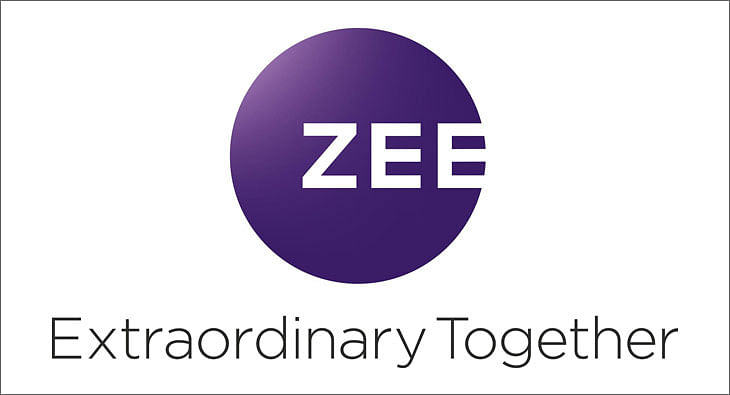Guest Column Retrofit: Kudos to AB Bardhan’s candid searching of the Left soul
AB Bardhan’s forthrightness during a recent interview with Karan Thapar regarding the demise of the Left and its afflictions impressed Sandeep Bamzai no end as the veteran journalist analyses what ails the Left in India, or for that matter, even the once strong BJP.

AB Bardhan reloaded. Wow!, was my initial reaction. For my mind immediately switched to rewind. Five and a half years ago, sometime in mid-May, AB Bardhan’s comment – ‘Bhad mein jaye vinivesh’ (To hell with disinvestment) triggered a veritable bloodbath on the bourses. The Congress had emerged as the single largest party, but it was clear that it needed support of the 61 Left MPs for government formation. And that, in fact, was the very kernel of the problem. The world looking at the Congress for direction on reforms realised quickly that the new government, in whatever form and shape it would finally emerge, would be hobbled by the Left. And when Bardhan did his famous diatribe against disinvestment, literally all hell broke loose. For the first time in its history, the BSE had to be shut down, not once but twice on the same day.
That in many ways set the tone and tenor of the five years of UPA rule, which finally culminated in the baggage being dispensed with at the altar of a revivalist Congress storming the 2009 general hustings. So, cut to 2009 and the same Bardhan’s interview to Karan Thapar. Believe me, it was a refreshing change from the raft of mediocre talking heads telly that is the norm on the box these days. More than anything else, here was an honest Bardhan being true not just to himself, but to all the viewers as well. I have not seen a politician so forthcoming, so open and unabashed in airing his viewpoint. He spoke at length about the demise of the Left, its afflictions and the straitjacket that it wears and is unable to wriggle out of. It was a wonderful exhibition of soul searching, an honest appraisal of the state of the Left, more than anything else a critique of the CPM, the largest and most arrogant chunk in the Indian Left led these days by Prakash Karat, a man so comfortable in the environs of his ivory tower that he has lost all sense and touch of reality.
Bardhan spoke of the retail corruption that had permeated the middle and lower rungs of the cadre in Bengal, which, according to him, is different from the wholesale corruption that is endemic to its top echelons. Here was a new Bardhan, bereft of bluster, acquiescing to most of Thapar’s posers and that too in the affirmative. He spoke about the arrogance of power, the imposition of the faulty industrialisation mantra on the hapless populace of Bengal. He highlighted the challenge of defeat. The Left led by CPM has ruled West Bengal for 32 years, uninterrupted. He said very interestingly that Chief Minister Buddha is a member of a collective and that he cannot impose his will on the people of Bengal without wider debate and dissemination. The problems of land versus industry have thrown the ruling dispensation into a tailspin. And Mamata di has cashed in on it. Since nature abhors a vacuum, Mamata di has stepped up to the plate and her appeal to rural and urban Bengal has seen the hoi polloi respond. The yoke of the Left has to be cast aside is the new clarion call in Bengal.
What I thought was even more pertinent in this interview with Thapar was Bardhan’s plain speaking. He said something to the effect that as a Communist, he was convinced that they can retrieve the situation by mending their ways. We need to whitewash our sins, we are Communists, we can correct ourselves, truth must be spoken, is how Bardhan summed up the situation. Mirroring what Bardhan said on telly was an analysis that I read in the latest issue of Tehelka, penned by Swapan Dasgupta, titled ‘Revenge of the Proletariat’.
But more of that a little later. As I watched Bardhan speak some home truths, I thought to myself, what prevents BJP leaders from introspecting publicly. Why can’t one of the gang of four – Sushma Swaraj, Arun Jaitley, Ananth Kumar and Venkiah Naidu – stand up, or sit down for that matter, and call a spade a spade. What prevents them from indulging in some plain speaking? How long will they delude themselves that all is well? Well, actually it begins with the fountainhead – LK Advani – who refuses to go. He refuses to accept that the history has passed him by. Oblivious of the repeated electoral disasters, the so-called intellectual elite of the BJP lies in disarray, running at sixes and sevens, refusing to accept the cold blooded reality of the yawning gap between themselves and the electorate. With a scrambled thought process no further from the realism existing on ground zero.
The guys who had the courage to tell it like it is – Yashwant Sinha, Arun Shourie and Jaswant Singh – have been muzzled and passed by. At least they attempted to examine the rot that had set into the party. More than anything else, the conglomeration of journos, both inside and outside the party, that it had cultivated and pampered is responsible for papering every ill that the party is suffering from. They have intellectualised everything and anything and left the party bankrupt and vacuous. One cannot believe that this is the same party that ruled India for six years. It has imploded so quickly and fallen into a dark abyss from which it cannot seemingly climb back to the surface.
But wait, I have digressed, let me bring you back to Swapan Dasgupta’s analysis in Tehelka. In many ways, this is a tale of two political formations that have gone so rapidly to seed that it seems improbable that they can extricate themselves from the lassitude and inertia that they face. The BJP ruled India for six years, the Left has been ruling Bengal for 32 years. Both are terminal patients. All the goodwill of Operation Barga, which empowered bargadars and provided landless labourers with a patch of land, has been frittered away by Buddha’s 2004 industrial policy. A policy, which allowed land grab in the name of industrialisation and went against the grain of Operation Barga, the edifice on which the Left stormed Bengal. Didi’s ‘Ma, mati, manush’ (mother, land and people) call has rallied Bengal like never before; in the main potently catching the rural mood.
I would like to end with Dasgupta’s writings, “Today, the CPI(M) finds itself politically paralysed. Buddhadeb’s lofty industrial dreams have come crashing down. With Mamata on the rampage and her party colleagues bulldozing their way into areas that were hitherto forbidden territory, old memories have come to haunt West Bengal again. There is fear that political violence could become endemic as turf battles intensify. There are concerns that a more vicious brand of Maoism (as compared to the Naxalites of an earlier age) has entrenched itself in some outlying districts, using Mamata as a convenient cover. More ominously for a state that was once a communal tinderbox, there are indications of Muslim sectarian bodies also using Mamata’s ever-growing umbrella as a camouflage.
“For the politically paralysed CPI(M), the Maoist menace became a self-fulfilling prophecy. Fattened and even corrupted by 32 years of uninterrupted power, the CPI(M) lacks both the capacity and the will to take to Mamata’s raw aggressiveness. With the state’s poor rallying behind her and identifying her as the new repository of entitlement politics – sops and lollipops for all – it is more than likely that West Bengal will give Mamata a chance to prove herself in Writer’s Buildings. The middle class may well be nervous, but the Bangla street is wildly enthused by her populism. Since Independence, West Bengal has had just seven chief ministers. Dr Prafulla Ghose, Prafulla Chandra Sen and Ajoy Mukherjee were old-style Gandhians, fuddy-duddy and ineffective; Dr BC Roy, Siddhartha Shankar Ray and Jyoti Basu were bhadralok patricians; and Buddhadeb is a chain-smoking Left intellectual, most at ease watching films with subtitles. Mamata, if she gets her way, will herald the entry of colloquialism into a rarefied pantheon.”
Ironically, SS Ray, the last Congress chief minister of West Bengal, lost because of his anti-naxal policies, and now, an even more dreaded and deadly Maoist menace is upon the Left Front, wreaking havoc on rural Bengal. The wheel of life has come full circle. From naxalites to Maoists; Nandigram, Singur and Lalgarh have become pit stops in a journey where the State has hurtled into a vortex of unprecedented violence, leaving even the intelligentsia alienated. And an electorate waiting to exhale, waiting for Mamata di’s coronation in 2011. But not before Bardhan told us some truths…
(Sandeep Bamzai is a well-known journalist, who started his career as a stringer with The Statesman in Kolkata in 1984. He has held senior editorial positions in some of the biggest media houses in three different cities - Kolkata, Mumbai and New Delhi. In late 2008, he joined three old friends to launch a start-up – Sportzpower Network – which combines his two passions of business and sport. Familiar with all four media – print, television, Internet and radio, Bamzai is the author of three different books on cricket and Kashmir.
(The views expressed here are of the writer’s and not those of the editors and publisher of exchange4media.com.)
Read more news about (internet advertising India, internet advertising, advertising India, digital advertising India, media advertising India)
For more updates, be socially connected with us onInstagram, LinkedIn, Twitter, Facebook Youtube & Whatsapp
You May Also Like
HT Media posts Consolidated Total Revenue of Rs 580 crore in Q2
Chairperson and Editorial Director Shobhana Bhartia says due to lower commodity prices and control on costs there has been an improvement in operating profit
HT Media has posted a Consolidated Total Revenue for Q2, 2020 at Rs 580 crore.
As per a statement released by the company, EBITDA for Q2’20 increased by 139%, and margins at 14% vis-à-vis 6% in previous year. This has been driven by softening of newsprint prices and continued focus on cost.
The Net Cash position at a consolidated level continues to be strong.
The Print ad revenue has declined due to sluggish volumes, even as yields have improved. National advertising continues to be soft, although local advertising witnessed growth.
Savings in raw material costs have driven improvement in EBITDA margins.
Chairperson and Editorial Director Shobhana Bhartia said, “Slowing economic growth has hit advertising spends in key categories, putting pressure on revenues across the media industry. As a result, our Print and Radio (on like to like basis) businesses saw revenues dip as compared to a year-ago. However, thanks to lower commodity prices and a tight control on costs, we saw an improvement in our operating profit. On the digital front, Shine, our online recruitment portal has shown good progress and continues to grow. Our outlook for the coming quarter remains cautious, given overall economic sentiment and macroeconomic trends. Cost-control and falling commodity prices should help protect our margins.”
Read more news about (internet advertising India, internet advertising, advertising India, digital advertising India, media advertising India)
For more updates, be socially connected with us onInstagram, LinkedIn, Twitter, Facebook Youtube & Whatsapp
ABP Group posts Rs 15.70 crore as net profit in Q1 FY20
The group’s total operating income stands at Rs 365.55 crore
ABP Group has posted a net profit of Rs 15.70 crore in the first quarter of FY20, as per media reports.
The group’s total operating income stands at Rs 365.55 crore.
It’s net profit for the fiscal ended March 31, 2019, was down 68% to Rs 31.90 crore compared to the previous fiscal.
The Profit Before Interest Lease Depreciation and Tax (PBILDT) has also dropped 53.52% to Rs 107.12 crore.
The group has six news channels - ABP News (Hindi), ABP Ananda (Bengali) ABP Majha (Marathi) and ABP Asmita (Gujarati), ABP Sanjha (Punjabi) and ABP Ganga (Hindi).
Read more news about (internet advertising India, internet advertising, advertising India, digital advertising India, media advertising India)
For more updates, be socially connected with us onInstagram, LinkedIn, Twitter, Facebook Youtube & Whatsapp
Zee Media posts consolidated revenue of Rs 137.03 crore for Q2 FY20
ZMCL has recorded 4.4% growth in operating revenue for first half of FY20
Zee Media Corporation Ltd (ZMCL) has posted a 4.4 per cent growth in operating revenue to Rs 337.6 crore in the first half of FY20, as per media reports.
It has reported a consolidated revenue of Rs 137.03 crore for Q2 FY20.
In a statement, ZMCL has said: “During the quarter, the network expanded its footprint s into Southern India through the launch of Zee Hindustan in Tamil and Telugu languages. This is intended to make the network's content accessible to wider audience.”
The operating expenditure in Q2FY20 has dropped by 21.7 per cent.
The statement further said: “EBITDA for HlFY20 improved by 34.1 per cent to Rs 1,029 million from Rs 767.5 million EBITDA for H1FY19, while the same declined by 9.4 per cent to Rs 370.2 million from Rs 408.7 million for the corresponding period last financial year. EBITDA Margin grew from 23.7 per cent in H1FY19 to 30.5 per cent in HlFY20, while growing from 24.2 per cent in Q2FY19 to 27 per cent in Q2FY20.”
Read more news about (internet advertising India, internet advertising, advertising India, digital advertising India, media advertising India)
For more updates, be socially connected with us onInstagram, LinkedIn, Twitter, Facebook Youtube & Whatsapp
No slowdown here: In-cinema ad rates up by at least 50% for 3 big Diwali releases
Housefull 4, Made In China and Saand Ki Aankh ready to hit the silver screen this week, with the hopes of giving brands the eyeballs they look for in theatres
It’s that time of the year again when theatres gear up to pocket maximum gains. Diwali is here and there are three films ready to hit the silver screen this week--Housefull 4, Made In China and Saand Ki Aankh. The festive period brings much joy to exhibitors, distributors and theatre owners because it ensures footfalls, giving brands the eyeballs they look for. In fact, industry experts don’t feel that economic slowdown this year has impacted in-cinema advertising. While they are concerned about three movies clashing during Diwali, they predict 50-100 per cent rise in ad rates during this period.
Advertising moolah
Mohan Umrotkar, CEO, Carnival Cinemas, is expecting 60-70 per cent surge in advertisement topline compared to last year. “Going by the buzz and advance booking for these three releases, market is bullish. Advertisers have blocked most of the advt-slots during the festival period. Housefull 4, Made In China and Saand Ki Aankh all combined together should generate around Rs 350 crore topline at the box office during the festival week. We are expecting 60-70 per cent surge in the advertisement topline from last year. Also, this year we have added around 14 per cent new advertisers, and 4 per cent of them are first-time cinema advertisers,” he says.
But according to Siddharth Bhardwaj, Chief Marketing Officer - Head of Enterprise Sales, UFO Moviez, things have changed a lot in the last couple of years. “Since some films have not really lived up to their expectation, advertisers are spreading the spends all through the year. They are picking up far more number of titles in the year rather than focusing only on Diwali or Eid.”
“It is good for the industry because you can monetise the inventories beyond just big weeks. A lot of content- driven films have come up which has given us the opportunity to monetise more markets. It has put lesser pressure on Diwali. Most of the cinemas are sold out for Diwali. It becomes difficult to accommodate everything,” Bharadwaj opines. He also reveals that for this week, the inventories are already full.
Diwali ad rates
Experts reveal that ad rates differ from property to property and depends on location as well. But Diwali surely sees a massive hike in rates. This year, theatre owners are expecting 100 per cent rise in ad rates. While Umrotkar revealed that for Diwali, they are charging 100 per cent higher than the regular card rates, Girish Johar, trade analyst and film producer, shared that even the rates for putting up kiosks of brands go up during festivals like Diwali.
“It’s based on property. On a ballpark, ad rates double up. So if you are putting up a kiosk, they charge say Rs 50,000-25,000 for a month. During Diwali, they charge almost double because of the kind of footfalls theatres witness,” Johar revealed.
Economic slowdown? Not for Cinema!
This year, brands have been pulling back their spends on other mediums due to economic slowdown, but cinema seems unaffected. Calling entertainment business recession-proof, Johar explains, “If you see the other side, box office is up by 15-20 per cent. Yes, it is a bit subdued because the brands are in a wait-and- watch scenario. They are increasing their focus around consumption rather than awareness.”
Bharadwaj too seconded it by saying, “These are challenging times but our medium is very efficient. If you see economy has slowed down, but the cinema has grown instead.”
Clash cover
Three movies are clashing this Diwali which means shared screens and box office gains.
“It’s never good for us when two or more big-ticket films release together. If they would have come on different dates, there are chances that more advertisers will take advt. inventory in those weeks separately instead of that one particular week,” shares Umrotkar.
Read more news about (internet advertising India, internet advertising, advertising India, digital advertising India, media advertising India)
For more updates, be socially connected with us onInstagram, LinkedIn, Twitter, Facebook Youtube & Whatsapp
INOX Leisure Ltd sees 42% growth in total revenue
Profit After Tax up 327% to Rs 51 crore
INOX Leisure Ltd (INOX) has reported financials for the second quarter ending September 2019.
Its total revenue has risen to Rs 524 crore with a 42% growth from Rs 369 crore in the corresponding quarter in FY19. Its EBITDA has more than doubled to Rs 107 crore with a 121% growth, while the PAT stood at an impressive Rs 51 crore, up 327% from previous year’s second quarter.
Siddharth Jain, Director, INOX Group, said: “At INOX, setting new benchmarks is now a routine, thanks to our consistently sharp focus on luxury, service and technology and our uncompromised desire to offer our patrons, nothing but the latest and the best! We are delighted with our remarkable consistency on all parameters, and we are sure about maintaining the momentum and focus on innovativeness. Content once again proved that why we term it as the ‘hero’. Thanks to the creators of such spellbinding movies, which keep inviting our guests to our properties, and allowing us to pamper them with our signature hospitality. With the launch of Megaplex, we are delighted to further our endeavor of developing experience-driven cinema destinations of global standards, and we will continue to do so. On behalf of Team INOX, I assure all our stakeholders that we will continue to break barriers and exceed all expectations.”
Read more news about (internet advertising India, internet advertising, advertising India, digital advertising India, media advertising India)
For more updates, be socially connected with us onInstagram, LinkedIn, Twitter, Facebook Youtube & Whatsapp
Hathway Cable & Datacom reports 100% subscription collection efficiency in Q2
The broadband subscriber base has increased from the previous quarter’s 840,000 to 860,000
Hathway Cable and Datacom has reported subscription collection efficiency at 100%, and the broadband subscriber base has increased from previous quarter’s 840,000 to 860,000 in quarter ending September, as per media reports.
It has narrowed its consolidated net loss by 74% and the operating EBITDA has been reported 15% up to Rs 107.5 crore compared to Rs 93.1 crore a quarter ago.
The total income has dropped 2%, while the expenditure is down 6%.
In the financial results, the company has said the FTTH markets are leading growth in customer acquisition.
Read more news about (internet advertising India, internet advertising, advertising India, digital advertising India, media advertising India)
For more updates, be socially connected with us onInstagram, LinkedIn, Twitter, Facebook Youtube & Whatsapp
ZEEL posts 7.4% YoY growth in total revenue for Q2 FY20
ZEEL's domestic advertising revenue has grown 1.4% YoY in Q2FY20
Zee Entertainment Enterprises Limited (ZEEL) has reported a consolidated revenue of Rs 2,122 crore for the second quarter of FY20, recording a growth of 7.4% on YoY basis.
The Earnings Before Interest, Tax, Depreciation and Amortization (EBITDA) was recorded as Rs 692.9 crore with an EBITDA margin of 32.7%. PAT for the quarter was Rs 413.2 crore. The Profit After Tax (PAT) for the quarter was Rs 413.2 million, with a growth of 6.9% YoY.
During the second quarter, ZEEL’s consolidated advertising revenue grew by 1.2% YoY to Rs 1,224.7 crore. The domestic advertising revenues grew by 1.4% YoY to Rs 1169 crore.
ZEEL has posted 26.8% YoY growth in Q2FY20 domestic subscription revenue. ZEEL’s consolidated subscription revenue grew by 19.0% to Rs 723.5 crore during the quarter.
ZEEL’s total expenditure in Q2FY20 stood at Rs 1429.1 crore, higher by 9.9% YoY compared to Q2FY19.
While ZEE5 recorded a peak DAU (Daily Active User) base of 8.9 million in September 2019, ZEE5 users watched an average of 120 minutes of content on the platform in the same month.
During Q2 FY20, the television network had an all-India viewership share of 18.4%.
During the quarter, ZEEL’s international business revenue was Rs 208.2 crore. The advertising and subscription revenues for international business declined by 4.0% YoY and 21.5% YoY, respectively.
Zee Music Company has registered 7.1 billion views on YouTube in Q2.
Punit Goenka, Managing Director and CEO, ZEEL, said, “I am pleased with the performance we have exhibited during the quarter. Our entertainment portfolio continues to grow from strength to strength across all formats and maintained its leading position. Our television network has emerged stronger post the implementation of tariff order on the back of a strong customer connect and brand pull of its channels. ZEE5 continued to gain traction across audience segments and markets, driven by its compelling content library and expanding list of partnerships across the digital eco-system. This strong operating performance allowed us to deliver industry leading growth in both advertising and subscription despite the tough macro-economic environment. Domestic subscription growth of 27% has reaffirmed the value proposition our television network has built over the years. The impact of tariff order has now largely settled down and has brought increased transparency along with improved monetization. Our domestic advertising revenue growth, though significantly lower than historical trend, is higher than the industry growth. We have witnessed an improvement in ad spends through the quarter and we believe that the onset of festive season along with measures taken by the government will help revive the consumption growth.”
Read more news about (internet advertising India, internet advertising, advertising India, digital advertising India, media advertising India)
For more updates, be socially connected with us onInstagram, LinkedIn, Twitter, Facebook Youtube & Whatsapp




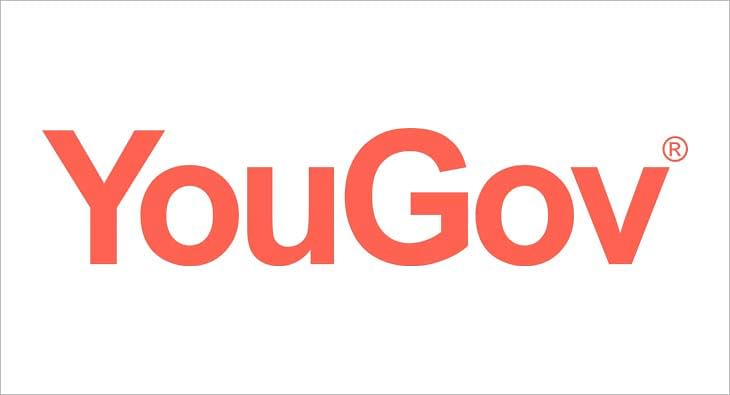
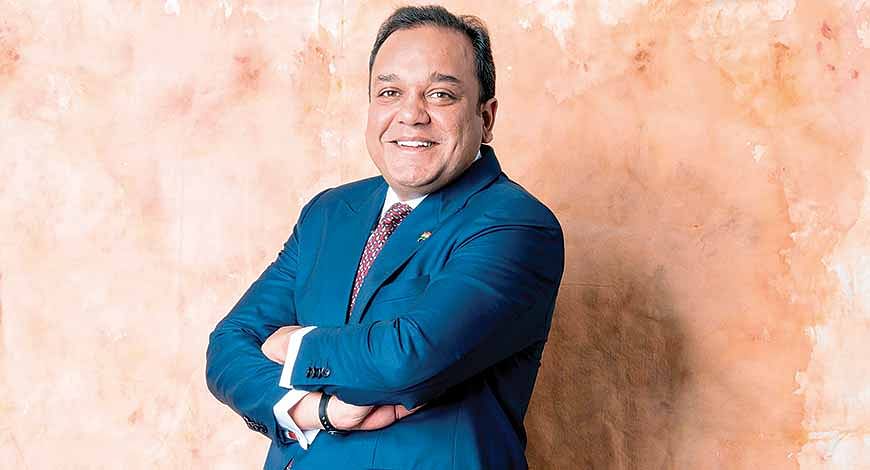








 Share
Share